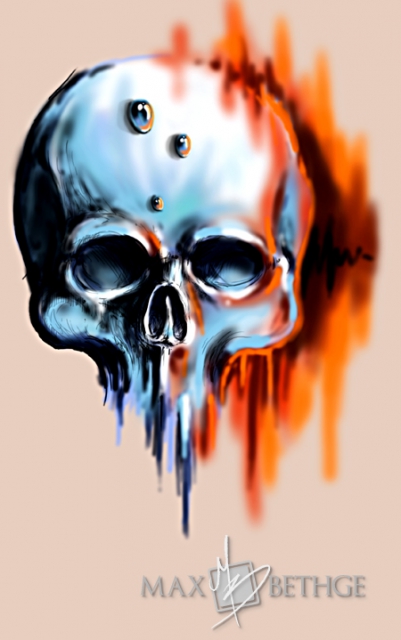

movies-the thirty-second, “Guardians of the Galaxy Vol. Whether you have spent the past decade and a half avoiding Marvel movies like scabies or are in so deep that you can expound on the Sokovia Accords, it is impossible to escape the films’ intergalactic reach. But, at the end of the day, we’re really just trying to make the movies that we ourselves would like to watch.” “Everybody’s kind of waiting for them to mess up. “There’s a lot of pressure on Marvel,” Yost told me. grew into the dominant force in global entertainment, pulling all of Hollywood into its orbit. He went on to co-write the sequels “Thor: The Dark World” and “Thor: Ragnarok,” as the M.C.U.
Red skull sketch movie#
Soon, he was sitting in front of the director, Kenneth Branagh, who had shaped the movie as a Shakespearean saga that pitted father against son and brother against brother-in space. The first Thor film was under way, and Yost was asked to take a shot at a troublesome scene. Yost was one of four writers who worked developing various characters, some of whom would eventually join the M.C.U. He would bound from one conference room to another, as teams planned the next steps of what would become known as the Marvel Cinematic Universe, or the M.C.U. “Imagine an office building stapled to a hangar of an airport,” Yost said. It now occupied a sprawling campus in Manhattan Beach, with its own soundstages. The previous year, after Marvel’s first film, “Iron Man,” earned more than five hundred million dollars, Disney had acquired the studio for four billion dollars. Yost, having built up his résumé on cartoons, was asked to join a writing lab at Marvel Studios, which was making its own live-action features, with astonishing success.
Red skull sketch series#
On the last day of his internship, Yost left the executives a sci-fi sample script, and he got a job writing for the animated series “X-Men: Evolution.”Ĭut to 2010.
Red skull sketch license#
branch to license Marvel characters to Hollywood Yost’s job was to dig through the vast library of characters and help package them for studios, “basically try to drum up interest.” He and Feige had long bull sessions about Namor, a sea-dwelling mutant.

The company, which had filed for bankruptcy a few years earlier, had set up the L.A. 252, but its origins weren’t revealed until the crossover series Marvel Super Heroes Secret Wars.) He landed a summer internship, working from a desk belonging to Stan Lee, Marvel’s legendary former editor-in-chief, who rarely came in. (The black suit first appeared in The Amazing Spider-Man No. “Oh, that’s a trick question,” Yost said. One of them, a guy in a ball cap who was also in his late twenties, sat Yost down for what turned into a “comic-book trivia-off.” The interviewer, whose name was Kevin Feige, asked, “What issue does Spider-Man get his black costume in?” The studio shared a small office with a company that made kites. He heard that Marvel had a new West Coast outpost and cold-called for an interview. in film business in Los Angeles, but he wanted to be a writer he had written an unproduced screenplay about an alien invasion. The Marvel characters always seem to have personal problems.”īy 2001, Yost, then twenty-seven, was getting an M.F.A. “Every time you think he’s going to live this big, glamorous superhero life, it’s not that way.

“He’s got money problems and girl problems, and his aunt May is always sick,” Yost said. Unlike the DC comics, whose heroes (Superman, Batman) towered like gods, Marvel’s were relatably human, especially Peter Parker, a.k.a. Wolverine could team up with Captain America Doctor Doom could fight the Red Skull. None of his friends read Marvel it was his own private world, a “sprawling story where all these characters lived in this universe together,” he recalled. Growing up in Missouri, Christopher Yost had boxes of Marvel comic books, which his mother bought at the grocery store.


 0 kommentar(er)
0 kommentar(er)
